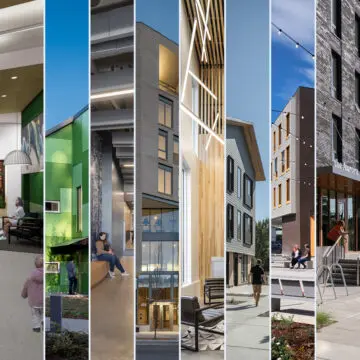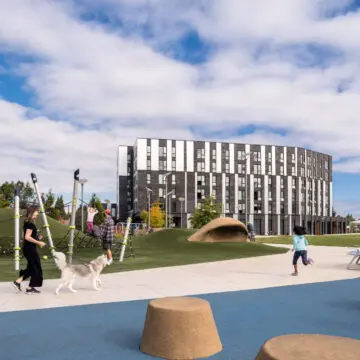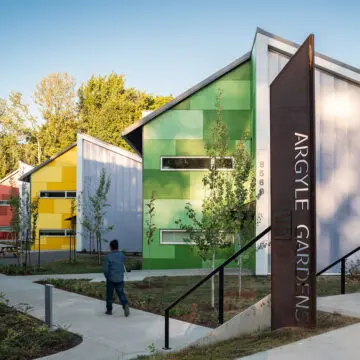Energy Trust of Oregon Awards Research Grant to Holst
Holst is honored to receive a research grant from the Energy Trust of Oregon (ETO) to study the operational and embodied carbon in multifamily housing.
Carbon Crossroads
Nearly 600,000 new homes will be needed in Oregon over the next 20 years. This pressing need challenges the building industry to provide many homes quickly, but it also offers an opportunity to develop strategies for multifamily housing that address net-zero operational carbon goals while aiming for lower embodied carbon footprints.
Operational carbon (the greenhouse gas emissions from building operations) makes up 37% of global greenhouse gas emissions. On the other hand, embodied carbon (the greenhouse gas emissions arising from the manufacturing, transportation, installation, maintenance, and disposal of building materials) currently makes up 11% of global greenhouse gas emissions and 28% of the building sector emissions. As renewable sources increasingly power electricity grids, embodied carbon is estimated to make up 72% of the carbon emissions from global new construction by 2030.
Our study aims to provide designers and the larger development teams of multifamily housing with embodied and operational carbon assessments of local multifamily projects, giving a deeper understanding of the intersection between the two as it relates to the design decisions teams make. Through this work, we will develop strategies for effective and meaningful analysis of operational and embodied carbon of multifamily housing. We hope that project teams will add carbon impacts to their decision-making and thereby improve the carbon footprint per dwelling unit of future projects.
Research Team
The research will analyze various wood-framed and hybrid construction multifamily housing projects in Oregon and Idaho. Conducted in two stages, the first will be a high-level analysis of approximately eight projects, using spreadsheet tools to examine operational and embodied carbon and valuable real-world energy use data from building owners where available.
Stage two will involve an in-depth assessment of three multifamily projects, including a whole-building life cycle assessment of each project. For operational carbon analysis, we will calculate emissions using the data of the prior year(s) of operational energy use or create a detailed predictive energy model with Revit Insight (where real-world data is unavailable).
The research team will be led by designer Hannah Rusnac, with research support from designers Rachel Gott and Rosemary Hill, technical support from Ben Ott, Holst’s BIM Coordinator, and assistance from Cory Hawbecker, Principal and Sustainability Director at Holst.
References
Actions for reducing embodied carbon at your fingertips. Carbon Smart Materials Palette. (2021, February). Retrieved September 1, 2022, from https://materialspalette.org/
February 2021 summary report: a companion document to the regional housing needs technical report. Oregon Housing and Community Services (OHCS). (2021). Retrieved June 29, 2022 from https://www.oregon.gov/ohcs/ab…
Why the built environment? Architecture 2030. (2021, February). Retrieved September 1, 2022, from https://architecture2030.org/w…







